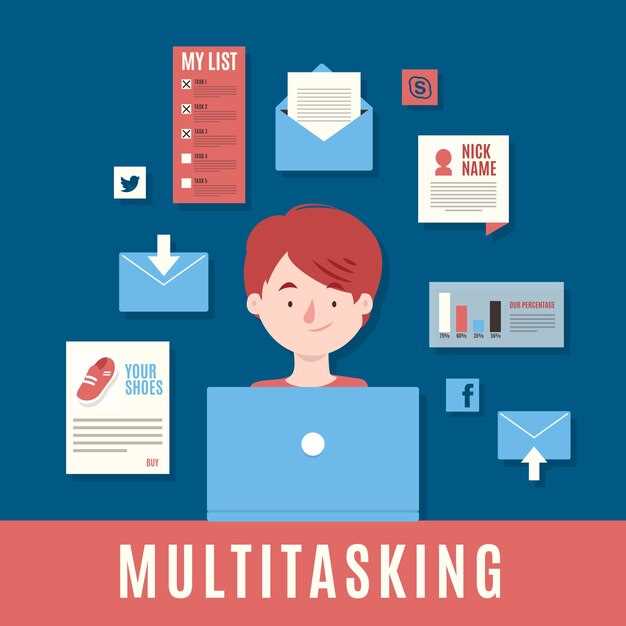Implement a weekly plan with three focused activities: one curated introduction, one casual group outing, one skills-based class. Limit initial conversation to 70% listening and 30% talking, send a short hand-written or digital note within 24 hours to capture the afterglow, and use concise opening words that invite sharing while protecting personal boundaries so interactions remain natural and feel fabulous rather than forced.
Track outcomes with simple metrics: number of meaningful exchanges, follow-ups, and declared interest; check results monthly and consider adjustments ifwhen progress stalls. Log who explicitly stated they were interested, which topics produced the strongest engagement, and what profile elements would attract the right match; aggregate answers into a short scorecard and collect one external opinion from a trusted friend to spot blind spots.
Address emotional friction directly: list the primary challenges, hold a five-minute debrief after difficult interactions, and note which phrases speak to comfort versus alarm. Trust instincts but verify assumptions–ask clear questions to know that expectations align. Enroll in a university course or community class quarterly to widen contact pools and test social hypotheses in low-stakes settings.
Lastly, keep a compact checklist on hand: three outreach items per week, two profile tweaks per month, one follow-up within 24 hours, and a monthly review of metrics. These concrete steps reduce guesswork, increase clarity in talking and sharing, and produce faster, data-driven answers about what methods truly work.
Practical Guide to Finding Love
Set a weekly goal of three meaningful encounters and log date, duration, topics, and outcome; review the dataset every Sunday to detect patterns.
Limit active apps to two platforms, allocate 90 minutes weekly to messaging, and stop opening new profiles when unable to manage inbox volume; this protects energy and improves managing priorities.
Run a small test: cap first meetings at 30 minutes for five contacts, note whether chemistry feels mutual, and flag breach of boundaries immediately.
When realizing a pattern of crossed boundaries or mismatched priorities across three interactions, mark that category off-limits; shared values trump transient attraction.
Allocate 40% of social time to group activities that generate natural introductions; these produce lower-pressure partnerships and reveal behavior across times instead of single snapshots.
Back decisions with objective signals backed by timestamped messages: punctuality, message frequency, and follow-through; if two signals miss, reassess projected future together.
Accept measurable limitations: inability to control other schedules, unknown outcomes, and rejection rates around 60% in casual contexts; focus on controllable inputs rather than a passive wait.
If costs block access to events, prioritize free or low-cost local options twice monthly; doing volunteer shifts or classes yields higher-quality introductions than random swiping.
Each month, collect three external reads from trusted friends and create one-line summaries; compare those notes to baseline criteria of what was wanted to avoid recency bias.
Measure progress with metrics: number of meaningful dates, ratio of messages to in-person meetings, and subjective comfort scores; treat every data point as feedback toward a better outcome.
Clarify your relationship goals: long-term commitment vs. casual dating
Decide: prioritize long-term commitment or casual dating; define measurable criteria and a timeline – examples: 3 dates to assess chemistry, 6 months to test compatibility, 18–36 months until cohabitation planning. then schedule monthly check-ins to evaluate progress.
write 12 direct questions to ask early: views on children, finances, career priorities, fidelity, managing stress, conflict style, religion, boundaries, privacy, social life, long-term goals, health habits. Use a simple test: score compatibility out of 100 with weighted items (values 30%, lifestyle 25%, conflict management 20%, intimacy 15%, planning 10%).
Track quantitative metrics: percentage of dates where respect observed, months without major unresolved conflicts, percentage experiencing emotional support, average weekly quality time, number of boundaries crossed. Target metrics when aiming at long-term: >85% respect, fewer than 2 major conflicts per year, sustain weekly quality time at least 2 hours. Evaluate patterns across at least 2–3 years when feasible. If metrics fall short, re-evaluate attitude, communication, integrity, and compatibility; take concrete steps like therapy or skills training, then test again after 3 months.
If casual is meant, state it explicitly and agree on safety norms: limit emotional investment, maintain social circle, avoid cohabitation planning, limit exclusive assumptions until clear outcome. Explore different types of connection over a 6–12 month span; if unable to maintain desired quality, step away.
Common tests include compatibility checklists, conflict-scenario role-play, etiquette under stress. Also write monthly summaries; highlight patterns learned, attitude shifts, recurring conflicts, and whether initial supposed intentions remain in place. Regular checking creates a norm where managing tensions itself becomes data used while trying new tactics. Use learning notes to record what has been learned after each phase. Expect it takes roughly 6 months while tracking metrics to recognize stable trends; without that window conclusions will be premature.
Assess readiness: emotional availability, time, and energy
Begin a 30-day readiness test: log emotional state, available hours for meeting, and energy on a 1–10 scale each day and treat the results as decision data.
- Quantify emotional availability:
- Daily entry: mood (1–10), triggers, ability to be vulnerable. If average level <6 after 30 days, pause active outreach and address underlying issues.
- Count unresolved attachments: more than two ongoing emotional ties (exes, unresolved conflicts) makes forming a genuine connection hard and increases risk of rebound; label each tie and set a closing action within 14 days.
- If impulse is to move into someone’s arms immediately after a breakup – especially during afterglow – mark as bias: excitement can warp judgement; delay intimate decisions 21–42 days.
- Time audit (concrete thresholds):
- Track weekly free time in 30-minute blocks for four weeks. If fewer than 4 hours/week are reliably available, inability to meet regularly is likely; adjust expectations or save active meeting attempts until schedule frees.
- Allocate one recurring 90–120 minute block per week labeled “meeting prep + social” before committing to dates; treat this block as non-negotiable.
- Energy budgeting and sources:
- Create an energy ledger: list three daily drains (work, caregiving, health) and three replenishing actions (sleep, exercise, friends). If net weekly energy is negative or averaging <5, front-line social efforts wont be enjoyable and likely wont last.
- If energy is lacking due to medical or burnout reasons, get a medical check and schedule a minimum 6-week recovery plan before expanding social channels.
- Sexual readiness and boundaries:
- Score sexually comfort level 1–10 and note conditions required to feel safe (testing, contraception, partners’ history). If score <5, do not proceed beyond light social contact until comfort increases.
- Communicate boundaries in the first two conversations; if boundaries arent respected, mark relationship as unsuitable and follow the exit plan.
- Decision rules and red flags:
- Rule: three consecutive weeks of stable mood >=6, average energy >=6, and at least 4 hours/week available = green to actively meet people.
- Red flag: persistent thought patterns that “something isnt my fault but makes me unable to commit” – seek specialist input; ignoring this wont improve outcomes.
- Honesty test: ask two friends to rate readiness; if both say “dont” or “doesnt look ready,” treat feedback as data, not insult.
- Practical exercises to build readiness:
- Three small exposures: accept one social invite, have one 30-minute phone chat, attend one group activity with friends present. Record enjoyment level and whether interaction felt genuine.
- Channel energy into one recovery habit (exercise, therapy, creative work) for 6 weeks; if mood still wont stabilize, escalate to professional support – an expert can help map next steps.
- Failure modes and preservation:
- If attempts keep failing and patterns repeat, map the pattern (what works, what doesnt) rather than blaming self; repeated failed attempts without reflection increases chance of being doomed to repeat mistakes.
- Save financial and emotional capital: limit dating spend to a fixed monthly amount and protect one weekend block per month as recovery time.
Follow these measurable steps, face concrete data instead of feelings alone, and honestly reassess after 8–12 weeks. If anything continues to warp decision-making or makes vulnerability feel unsafe, pause active outreach and prioritize stabilization before making a move.
Design a sustainable dating routine with small daily actions
Set a 10-minute daily routine: review new messages, send one thoughtful reply, update a personal line in the profile and schedule one micro-goal for the day.
Use measurable tips: spend 3 minutes scanning up to 5 submissions, 4 minutes to write a one-sentence opener, 3 minutes to log reactions and mood. Track response rate as percentage; pause anyone whose reciprocity drops under 20%.
Create a simple scoring system: assign 0–10 across respect, chemistry, shared values and emotional availability; an important signal is consistent listening. Assign worth only to matches scoring 6 or higher. When one-on-one contact begins, book a 25–30 minute call within week 2; note how often they listen and whether a partner speaks about goals and boundaries.
Avoid escalating sexual topics early; emotionally heavy disclosures need at least three conversations before deeper commitment. Without reciprocal openness, pause contact. If a conversation began with blame or constant complaints, treat that fault pattern as a red flag and deprioritize.
heres a weekly template: Day 1 – scan submissions and write two tailored lines; Day 3 – follow up with one open question that invites their story and feelings; Day 7 – one-on-one video with a short agenda, 30 minutes max. Track most active hours and add one small surprise kindness each month.
Measure the power of small actions over the course of three weeks: given a three-week window, expect reply rate shifts of 10–30%. Sometimes reduce outreach when energy dips; create personal limits and deal with ghosting by sending a single closure message, then stop. Not every match is meant to continue, so review values, emotional signals again before deeper steps.
Flirting toolkit: five practical openers that feel natural
Open with a context-linked line that invites a short reply; immediate observations beat rehearsed scripts.
-
“Nice playlist – whats this artist’s story?”
- Targets shared taste, reveals values and passion quickly; tweak your follow-up to match tone.
- (theyre often drawn to tracks that align with values and spark conversation.)
-
“Great technique on that move – how much practice has it taken?”
- Praise visible effort and basics rather than looks; effort-based compliments become more memorable.
- Successful replies tend to include short anecdotes about practice, which opens deeper exchange without heavy planning.
-
“Tried that dish today and almost ruined it – whats the trick?”
- Share a concise experience, then ask a simple question; answers reveal taste, short plans and small challenges.
- Quickly follow with a light solution or a swap of tips; planning ahead on a single follow-up eases frustrating pauses.
-
“Can this carry-on actually fit up there? Any thoughts on the overhead?”
- Small-help asks create safe proximity; comment on a coffee order or luggage placement as neutral openings.
- Gratitude softens the ask, offer a quick tip or an extra hand to become a friend rather than a stranger.
-
“Two-step dancing challenge – taken or passing?”
- Playful, low-risk dares that involve a short movement (a single dancing step) test boundaries while keeping tone light.
- Birnbaum says playful risks increase rapport when basics are secure; keep gestures small, avoid wind-in-the-hair theatrics, though respect body cues.
Ever keep lines under 12 seconds, assess need to pause between topics, watch nonverbal signals and save deep material until rapport feels secure; those brief openers enjoy higher response rates with minimal effort, clear mind, and modest planning ahead.
Spot red flags early and set clear boundaries
Block and document immediately: any caller who uses threats; record phone timestamps and message content in a secure log and escalate quickly if threats continue.
Set three non-negotiables: no attempts to provoke a fight; no late-night controlling texts; no repeated checking of devices without consent. Enforce boundaries firmly and communicate consequences in writing.
Treat patterns as data: were messages deleted, were plans cancelled more than three times in two weeks, were apologies followed by identical behavior? Log phrasing such as ifwhen or “ifwhen I’m free” as inconsistency markers and assess possibilities realistically.
Mindset checklist: prioritise mental and physical health; preserve solo activities that enable clear thinking; favour facts over narratives and avoid believing claims without evidence; write down every incident with timestamps and witness names.
Quality threshold: expect interactions that build mutual respect; minor conflicts that resolve via mutual accountability can be allowed, but patterns of control, gaslighting, or desperately pursuing contact indicate low quality and require ending contact.
When safety is compromised, contact neutral agents–friends, platform moderators, or professionals; if threats persist, document and involve authorities; avoid assigning personal fault when patterns represent emotional harm.
Prioritise strong standards: easy excuses about missed commitments are red flags; if multiple boundaries are breached, step back immediately. Choose right engagements that allow time to enjoy shared activities and preserve health; aim at romance that becomes deeper and flourishing rather than constant doubt; when truth is unclear, assume safety and escalate else to neutral agents.
| Red flag | Action |
|---|---|
| Repeated late cancellations (were plans cancelled >3x in 2 weeks) | Reduce contact, write down timestamps, involve trusted agents if pattern continues |
| Excessive checking or monitoring of multiple accounts or phones | Set boundary, demand transparency, remove access to devices and accounts |
| Gaslighting or blaming that turns minor conflicts into personal fault | Call out specific examples, refuse to fight about truth, prioritise health |
| Desperate persistence: repeated calls, messages, or attempts to contact elsewhere | Document evidence, block channels, escalate to moderators or authorities if safety is threatened |
| Promises of deep commitment followed by inconsistent acts (ifwhen patterns) | Assess possibilities realistically, request consistent follow-through, prefer flourishing, stable interactions |


 Should You Search for Love or Let It Find You? A Practical Guide to Finding Love">
Should You Search for Love or Let It Find You? A Practical Guide to Finding Love">


 15 Ways to Make Him Want You – Practical Tips to Spark Attraction and Build Connection">
15 Ways to Make Him Want You – Practical Tips to Spark Attraction and Build Connection">
 4 Reasons Not to Settle in a Relationship – How to Find True Love">
4 Reasons Not to Settle in a Relationship – How to Find True Love">
 Overcome the 3 Main Fears That Stop You From Finding Love">
Overcome the 3 Main Fears That Stop You From Finding Love">
 No Response? Nail Your Cold Email Follow-Up with Proven Strategies and Templates">
No Response? Nail Your Cold Email Follow-Up with Proven Strategies and Templates">
 Why Couples Choose Cohabitation Over Marriage – Key Reasons, Benefits, and Trends">
Why Couples Choose Cohabitation Over Marriage – Key Reasons, Benefits, and Trends">
 50 Telltale Signs He Wants to Marry You and What to Look For">
50 Telltale Signs He Wants to Marry You and What to Look For">
 Why Men Don’t Change – Understanding the Real Barriers to Personal Growth">
Why Men Don’t Change – Understanding the Real Barriers to Personal Growth">
 Signs Someone Is Using You – Are You Wasting Your Time in a Relationship? Part 1">
Signs Someone Is Using You – Are You Wasting Your Time in a Relationship? Part 1">
 The Weird and Adorable Things Men Find Attractive in Women – Insights From My Guy Friends">
The Weird and Adorable Things Men Find Attractive in Women – Insights From My Guy Friends">
 When Your Husband Says He Needs to Work on Himself – What It Means for You">
When Your Husband Says He Needs to Work on Himself – What It Means for You">